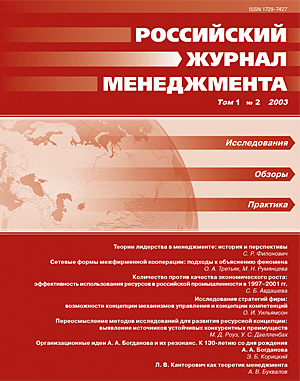Network Forms of Inter-firm Cooperation: Approaches to Explanation of the Phenomena
Abstract
Empirical studies of the inter-firm networks are so numerous and diverse that it seems to be useful to jointly analyze them. This paper is aimed at comprehensive overview of theoretical background of inter-firm network explanations and traces the roots, which led to the emergence of a new network paradigm in terms of the theory of the firm. It also provides an analysis of dynamics and theoretical formation of the paradigm itself. We first analyze antecedent explanations of the inter- firm cooperation given by economics, sociology, and a number of other disciplines. These explanations, though very diverse, have formed foundation for the development of a new network paradigm. The second part of this paper is focused on the analysis of the network interpretations in theories constructing the theory of the firm paradigm. These theories resemble their antecedents as they combine already existing inter-firm network explanations. However, their major input is in seeing inter-firm networks as an integral part of the economic and social reality, which provides additional explanations of the firm’s boundaries and existence. Finally, directions of further inter- firm network research are suggested.
Downloads
References
REFERENCES IN LATIN ALPHABET
Downloads
Published
How to Cite
Issue
Section
License
Articles of the Russian Management Journal are open access distributed under the terms of the License Agreement with Saint Petersburg State University, which permits to the authors unrestricted distribution and self-archiving free of charge.





